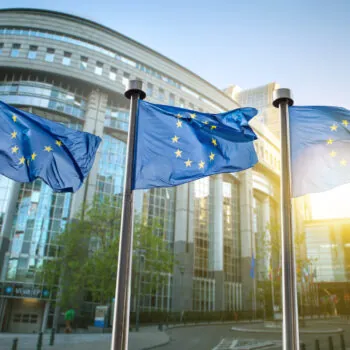Loss and damage happens when efforts to avoid and cope with climate impacts are simply not enough to protect us from impacts. You might lose your home in a storm-surge, when warming has caused the seas to rise to such a level that even the best flood prevention cannot stop the waters. Or drought might become so commonplace that even drought-resistant crops cannot produce food in your community anymore.
How much risk are you prepared to take?
Loss and damage is already happening. At the start of COP21 on Monday Prime Minister Christie of the Bahamas explained that Hurricane Joaquin, which tore through his country in October, caused $100m in damage – that's 10% of their GDP. US President Obama cited irreversible glacier melt and permafrost thaw in Alaska. And President Loeak of the Marshall Islands spoke of the continuous onslaught of climate disasters and the existential threats that climate change poses to his entire country. These examples just scratch the surface. Impacts have complex effects and they are escalating.
Clearly we have not caught up with the new normal of climate impacts. But accelerating loss and damage of this kind is not yet inevitable. It is not too late to act. Increased action on mitigation and adaptation can cut these risks substantially. However when it comes to any risk of this size contingency planning remains an essential part of any risk management strategy. Governments, businesses, cities and even citizens do it every day for a whole slew of risks: why should climate risks be an exception?
Why is it so hard to take responsibility?
It is not easy for anyone to delve below the surface and begin asking profound moral questions about what climate impacts mean to our societies and economies. This challenge is compounded at the international level by the principle that the countries most responsible for causing climate change hold the most responsibility for its impacts. Loss and damage on a global scale is a pretty daunting responsibility. Some developed countries worry that recognising loss and damage in the Paris agreement would leave them open to an unmanageable number of claims for liability and compensation. However, failing to address loss and damage will have far more catastrophic consequences.
In an interconnected world an ad hoc approach to dealing with the scale of this challenge would leave governments, businesses, investments and citizens exposed. Developed countries are waking up to this reality, realising it is in their national interest to begin planning and managing their responses to the worst climate impacts. Contingency planning for loss and damage increases the understanding of risks and directs attention toward the best risk management strategies. In many cases this will strengthen the case for mitigation and adaptation. Other approaches include risk insurance, early warning systems, migration and financial support. No one likes to plan for the worst but it must be done.
How could Paris prepare for loss and damage?
The good news is that having the Paris conference on the political agenda has prompted far more action on loss and damage than ever before. In July the G7 announced it would insure up to 400 million more vulnerable people against extreme weather events. This week Germany said it would take responsibility to fulfil half of that target and the United States pledged $30 million for climate risk insurance schemes in the Pacific, Central America and Africa. In September the French announced their Climate Risk Early Warning Systems initiative (CREWS) to address gaps in early warning systems in the most vulnerable countries. Switzerland and Norway launched an initiative to improve the legal protection of people displaced from natural disasters and the negative effects of climate change. And this week the UN brought much of this work together with the launch of A2R: ‘Anticipate, Absorb, Reshape’. This is an international initiative which gives appropriately global credibility and respect to resilience challenges.
The next step, by the close of the Paris talks, is formal recognition in the agreementThe next step, which we need to reach by the close of the Paris talks, is formal recognition of loss and damage in the agreement. As this policy area is relatively young compared to its mitigation and adaptation peers it’s likely to be brief and to the point. We can hope to see a continuation of the Warsaw International Mechanism on loss and damage, currently tasked with exploring the consequences of loss and damage as well as the methodologies for managing it. As the Paris agreement carries us into a new era of climate impacts, technologies and political realities, policy and action will undoubtedly evolve. What the Paris agreement must do is include loss and damage in the agreement and show that all countries are taking climate impacts seriously. Governments in Paris must show their citizens they are aiming to limit warming whilst planning for a full spectrum of climate risks.


